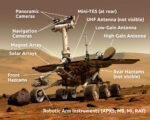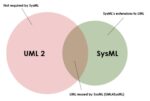Electronic engineers use advanced simulation tools to create virtual representations of complex electronic circuits. These “digital twins” streamline the circuit design process, accurately modeling silicon behavior and performance before physical fabrication. This article reviews the three primary circuit simulation categories: analog, digital, and mixed. It also discusses different simulation levels, such as block and chip, and […]
Simulation
If you’re designing MEMS devices, here are some tools to consider
The uses for microelectromechanical systems (MEMS) devices have grown exponentially. Applications for MEMS technology include actuators, sensors, inertial measurement units (IMUs), energy harvesters, pumps, motors, oscillators, resonators, and more. They are used in all areas, from consumer to medical, military, and space. Two keys to the expansive uses of MEMS devices include the ability to […]
If you are working with antennas, here are some tools to consider, Part 2
Antenna design and integration is an important activity for 5G telephony, wireless Internet of Things (IoT) nodes, Wi-Fi networks, near field and satellite communications, and a range of other applications. Without robust antenna designs and solid system integration, the performance of those applications can be severely compromised. Balancing the needs for efficiency, gain, bandwidth, pattern […]
If you are working with antennas, here are some tools to consider, Part 1
Antenna design and integration is an important activity for 5G telephony, wireless Internet of Things (IoT) nodes, Wi-Fi networks, near-field, and satellite communications, and various other applications. Without robust antenna designs and solid system integration, the performance of those applications can be severely compromised. Balancing the needs for efficiency, gain, bandwidth, pattern characteristics, and decreased […]
What are digital twins, and where are they on the “hype cycle”?: part 2
Digital twins are getting lots of deserved attention, but are they the cure-all for whatever simulation issues you have? Although digital twins are undoubtedly valuable tools along with basic simulation, modeling, HITL, and others, the associated all-good/no drawbacks promotion concerns me. When a tool, product, or other development gets a lot of “pumping up” to […]
How do SDLC and MLM relate to MBSE?
Depending on the context, SDLC can stand for system development or software development lifecycle. In model base system engineering, the SDLC (sometimes called the Application Development Lifecycle, ADLC) is a multi-stage process for planning, creating, testing, and deploying a system, including requirement analysis, design, development and testing, implementation, documentation, and evaluation. Model lifecycle management (MLM) […]
How do SPDM & PLM support MBSE?
Simulation process and data management (SPDM) is a software tool that manages simulation processes and data across the enterprise and the product lifecycle. In MBSE, SPDM can be used to help build and maintain the digital thread. SPDM provides traceability. It’s related to product lifecycle management (PLM). PLM provides a database for all information related […]
How do MIL, SIL, PIL and HIL simulation and testing relate to MBSE?
Model-based systems engineering (MBSE) supports requirements development, design, analysis, verification, and validation of complex systems, especially cyber-physical systems and systems of systems. Verification (simulation) and validation (testing) are key elements of MBSE. Model in the loop (MIL), software in the loop (SIL), processor in the loop (PIL), and hardware in the loop (HIL) simulation and […]
What’s a digital shadow and how does it relate to a digital twin?
Depending on how they are used, digital shadows take different forms and can be created using different techniques. Digital twins, on the other hand, have a specific definition within model-based systems engineering (MBSE): a virtual representation of a device or system that spans its life cycle, from initial conceptualization and specification through end of life, […]
How do SysML and model-based design relate to MBSE?
Model based design (MBD) is not a new concept; it’s been successfully applied to complex software systems for many years. MBD is often implemented using the unified modeling language (UML) for software development from the Object Management Group (OMG). Extending the concepts of MBD to cyber-physical systems, including both software and hardware, is a relatively […]










